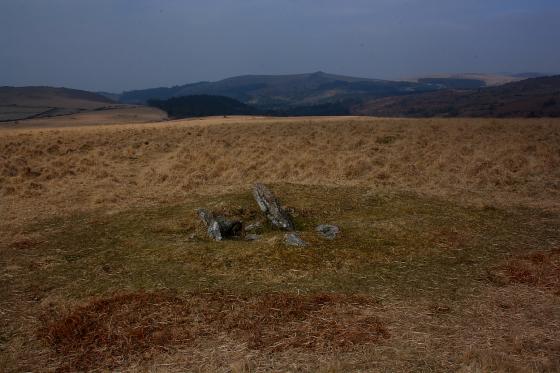The OS map simply notes “cairns”, so I am a little unprepared for the number of cairns that are actually crowding the top of the Beacon. I pass what I take to be one next to the path on the climb uphill, but the better-preserved ones are out of sight until the top is gained. These are similar to the ones I am becoming used to from trips to the Brecon Beacons, proper rubble-constructed summit cairns. They are in pretty good condition, except one that has a mini-shelter built on its top (I learn from TMA when I get home that these cairns were restored after earlier walker-damage).
From the top of the Beacon, views open northeast to the higher Ugborough Beacon, also topped with assorted barrows, and north to Butterdon Hill, which is the site of my first Burl-guided sites of the day. The route to Butterdon is marked by a very handy row of post-medieval boundary stones, the first of which start in the midst of the Western Beacon cairns. At these southern reaches of the moors, there are a few folks about and although the sky is overcast, it doesn’t look like it will rain. Nevertheless, this is an expansive landscape and it’s reassuring to have a helpful navigation aid as I head downhill and northwards in the company of these markers.





















































































































































































